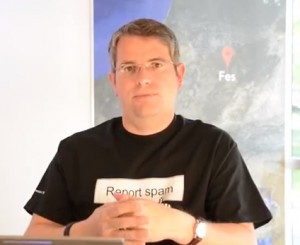 Think Google’s attack on unnatural links and link spammers is limited just to the US? Think again. Google has made it clear they are targeting spammy practices from around the world, by attacking Polish and German link spammers over the past month, and now Matt Cutts has announced Spanish and Italian webmasters breaking guidelines will be the next to get taken down. For more information, you can check out the report from Search Engine Land.
Think Google’s attack on unnatural links and link spammers is limited just to the US? Think again. Google has made it clear they are targeting spammy practices from around the world, by attacking Polish and German link spammers over the past month, and now Matt Cutts has announced Spanish and Italian webmasters breaking guidelines will be the next to get taken down. For more information, you can check out the report from Search Engine Land.
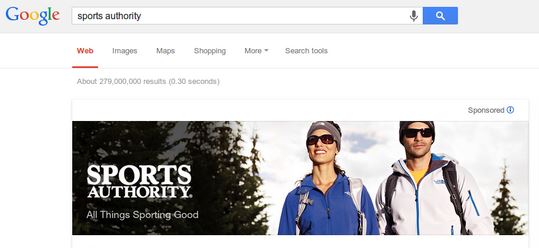
You may remember the uproar from last October, when Google began experimenting with huge banner ads that ran across the top of branded search results. Many hailed them as the first sign of a completely branded search engine, while others weren’t as bothered by the large graphics appearing strictly on branded searches.
Either way, you shouldn’t expect to see the ads any longer. During a SMX West keynote discussion with Danny Sullivan, Google’s Armit Singhal declared the test to be over while saying that the test had failed.
Ginny Marvin suggests the test ads weren’t getting high enough click-through rates (CTR) to justify expanding or keeping around, but even Marvin admits CTR would be an odd metric to measure the success of the ads considering they acted more as a graphic introduction to brands you were searching for and didn’t include call-to-actions.
The test was very small in comparison to most Google tests, with only about 30 advertisers participating. Their banners were only shown on about 5 percent of search queries. Maybe Singhal or someone else from Google will explain how the tests were failures, but I wouldn’t bet on it. Most likely, the tests will just be forgotten like many other failed Google experiments.
However, if you missed the chance to catch some of these ads when they were appearing, or you are simply nostalgic for some nice branded banners, Marketing Land put together a slide show with many of the banners when they were still active, which you can view below.
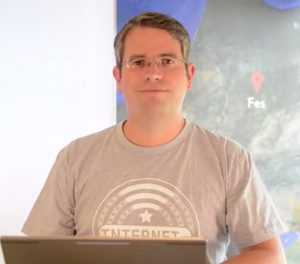 Google has been bringing down the hammer on spammy websites quite a bit recently with more specific penalties for sites that aren’t following guidelines. There have been several high-profile cases such as the Rap Genius penalty, and several attacks on entire spammy industries. But, if you are responsible for sites with spammy habits, a single manual action can hurt more than just one site.
Google has been bringing down the hammer on spammy websites quite a bit recently with more specific penalties for sites that aren’t following guidelines. There have been several high-profile cases such as the Rap Genius penalty, and several attacks on entire spammy industries. But, if you are responsible for sites with spammy habits, a single manual action can hurt more than just one site.
It has been suggested that Google may look at your other sites when they issue manual actions, and Matt Cutts has all but confirmed that happens at least some of the time.
Marie Haynes reached out to Cutts for help dealing with a spammy client, and his responses make it clear that the client appears to be linked to “several” spammy sites. Over the course of three tweets, Cutts makes it obvious that he has checked out many of the spammer’s sites, not just the one who has received a manual action, and he even tells one way Google can tell the sites are associated.
@Marie_Haynes e.g. notice that http://t.co/7wcwQVKaH1 has the same address and the same company registration number.
— Matt Cutts (@mattcutts) March 7, 2014
@Marie_Haynes and make sure to press your client about exactly how many "quick case" sites they own, because it appears to be several.
— Matt Cutts (@mattcutts) March 7, 2014
@Marie_Haynes so I worry that you haven't truly gotten through to your client, who shows signs of long-standing, mass, deliberate spam 🙁
— Matt Cutts (@mattcutts) March 7, 2014
Of course, Google probably doesn’t review every site penalized webmasters operate, but it shows they definitely do when the situation calls for it. If your spammy efforts are caught on one site, chances are you are making the same mistakes on almost every site you operate and they are all susceptible to being penalized. In the case of this client, it seems playing against the rules has created a pretty serious web of trouble.
Twitter has become an undeniable force in modern culture. Even if you aren’t signed up for the social media platform, you can hardly turn on the television without being bombarded by tweets and hashtags.
Every major news network solicits tweets from their viewers in order to get real-time responses to issues, and any new episode of a show is bound to have at least one hashtag hovering in the bottom corner of the screen.
But, those TV hashtags highlight one of the biggest problems with Twitter: few people actually understand hashtags or how to use them efficiently. Sure, we all know how to tag Instagram photos with them, or we slap a silly hashtag on the end of tweets to add a little more information, but the number of people actually using hashtags to organize and sort through the constant tidal wave of new tweets is actually quite low.
It isn’t that Twitter’s users aren’t smart enough to use hashtags more efficiently, but it is difficult to make hashtags a very useful sorting device without going through a middleman. Twitter’s search engine can let you broadly search hashtags, but if you want to actually make sense of the mess you most likely need an extra tool to help you out.
Ann Smarty from Search Engine Journal pulled together five such tools to help Twitter users everywhere turn hashtags into a vital part of their information consumption every day. If you want to be smart with your hashtags, these tools are the best place to start.
1. Twitter Chat
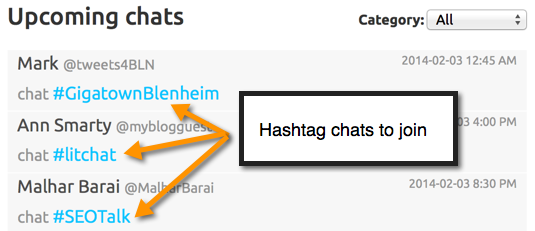
When Twitter began using hashtags, it didn’t take long for users to figure out that the tags can be used to create a conversation between numerous people. Rather than directly messaging an individual, you are able to put a topic or “chat title” in the form of a hashtag so users are able to create a real discussion. But, the conversation was still cluttered and not well laid out for the average reader.
TwChat allows you to take those hashtags and monitor them in real time. It also lays the tweets in a more cohesive way, so that you can more quickly read and understand the conversation. Best of all, it is super simple to use, free, and doesn’t require downloaded software.
2. TagDef

Originally, there was an unspoken rule that hashtags should be easy to understand at a glance. Obviously, this rule has fallen apart over time. Hashtags tend to be a combination of slang, inside jokes, and promotional material that makes no sense without context.
With the help of TagDef, you won’t have to worry about not being caught up with the latest American Idol hashtag or the slang younger people are using to keep up with the meaning behind hashtags popping up in your feed. The tool lets you search a hashtag and get the meaning instantly. You can also edit and add your own meanings. TagDef acts like Urban Dictionary exclusively for hashtags (and potentially a little less focused on profanity).
3. Hashtags
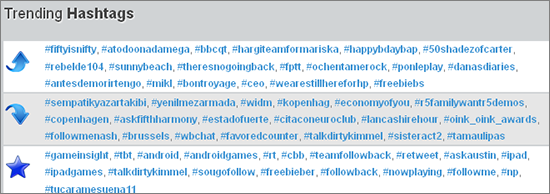
Hashtags gained its reputation as the largest hashtag database on the web, but there is much, much more there. The site includes analytics, how to articles, blog posts, a chatroom, a forum, a hashtag dictionary, events, trending hashtags, popular hashtags (long-term), and even more.
4. Tagboard
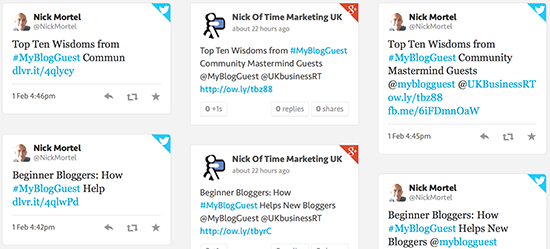
Of course, hashtags aren’t limited strictly to Twitter. The history of hashtags goes all the way back to IRC chats, but they have spread to nearly every major social networking platform out there. Facebook, Instagram, Google+, and Vine have all implemented the organizing tool. Tagboard takes hashtags from across all those different platforms and displaying them all on one page. You can even use it as a social network dashboard, allowing you to like, share, or retweet as you desire without ever having to leave the site.
5. Hashtagify.me
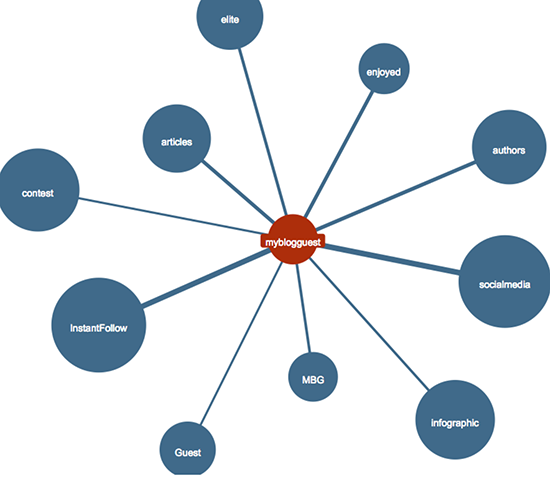
There is no rule you have to use only one hashtag per post. In fact, many add three or more hashtags on a large number of their posts, but it can be hard to see how they are related from Twitter’s site. Hashtagify helps you see how different hashtags are related and their usage patterns, as well as offering in-depth analysis in their pro version. They also have active breakout alerts, so you can always be the first to know about the new cool hashtag.
Explore TMO
From Our Blog
 Google Rep Says A New Core Algorithm Update Is Coming SoonJuly 18, 2024 - 7:01 pm
Google Rep Says A New Core Algorithm Update Is Coming SoonJuly 18, 2024 - 7:01 pm Menu Items and Store Traffic May Help Local Google Rankings – A LOTJuly 5, 2024 - 10:38 pm
Menu Items and Store Traffic May Help Local Google Rankings – A LOTJuly 5, 2024 - 10:38 pm



